Special Report
The Worst Outbreaks of All Time

Published:

The novel coronavirus was declared a pandemic less than eight months ago and already it is among the deadliest health crises in history. The respiratory syndrome coronavirus 2, which causes COVID-19, was first detected in early December 2019. By late October 2020, more than 40.1 million people have been infected and over 1.1 million people around the world have died.
Vaccines to prevent the coronavirus disease have been in development for months. As of Oct. 13, 2020, four vaccines have begun large-scale clinical trials in the U.S., and more than 100 others are under development worldwide, according to the World Health Organization. However, an effective vaccine may not be available before the middle of next year.
The coronavirus disease outbreak is without a doubt one of the most serious international public health emergencies in recent memory, triggering lockdowns aimed at curbing the spread of the virus in many countries and devastating economies. If not contained soon, the devastation the virus causes may come close to the devastation wrought by some of history’s worst outbreaks. COVID-19 has already killed more people than other pandemics have during their runs of several years.
From the time of the pharaohs to the present day, epidemics and pandemics of diseases like the bubonic plague, cholera, influenza, and smallpox have had a cataclysmic impact on civilizations. These scourges changed history, accelerated the decline of empires, decimated armies, and molded cultures.
Click here to see the 20 worst outbreaks of all time ranked by death toll

21. Hong Kong Flu
> Death toll: 1 million
> Disease/Cause: H3N2 strain of the Influenza A virus
> Affected area: Asia, Australia, Europe, United States
> Duration: 1968-1969
The Hong Kong flu was caused by an H3N2 influenza virus that spread to other continents in 1968. It is still in circulation. The severity of the flu varied by region. It affected few people in Japan but was more widespread in the United States. The most susceptible groups, babies and older people, died at higher rates. A vaccine created to fight the virus became available only after the flu had peaked. Influenza is a contagious respiratory illness caused by influenza viruses.
[in-text-ad]
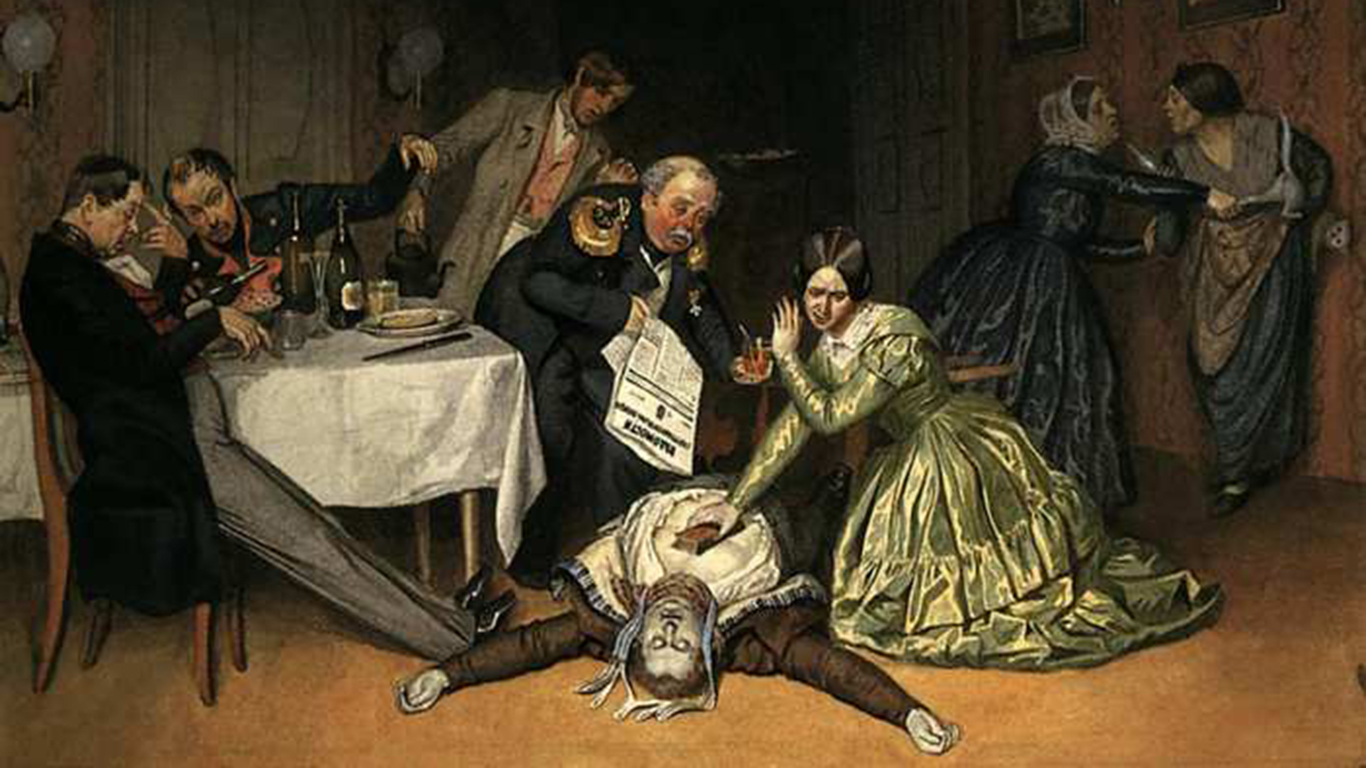
20. Third Cholera Pandemic
> Death toll: 1 million
> Disease/Cause: Cholera
> Affected area: Originated in India, spread through Asia, Europe, North America, and Africa
> Duration: 1852-1860
England was in the grip of the pandemic — which originated in India and spread to many continents — when physician John Snow, one of the fathers of modern epidemiology, conducted the research that would eventually lead to the conclusion that cholera is waterborne. He also traced a local cholera outbreak in a London street to a specific water pump. Cholera is a diarrheal illness caused by an infection of the intestine by the bacterium vibrio cholerae and can lead to dehydration and death if left untreated.
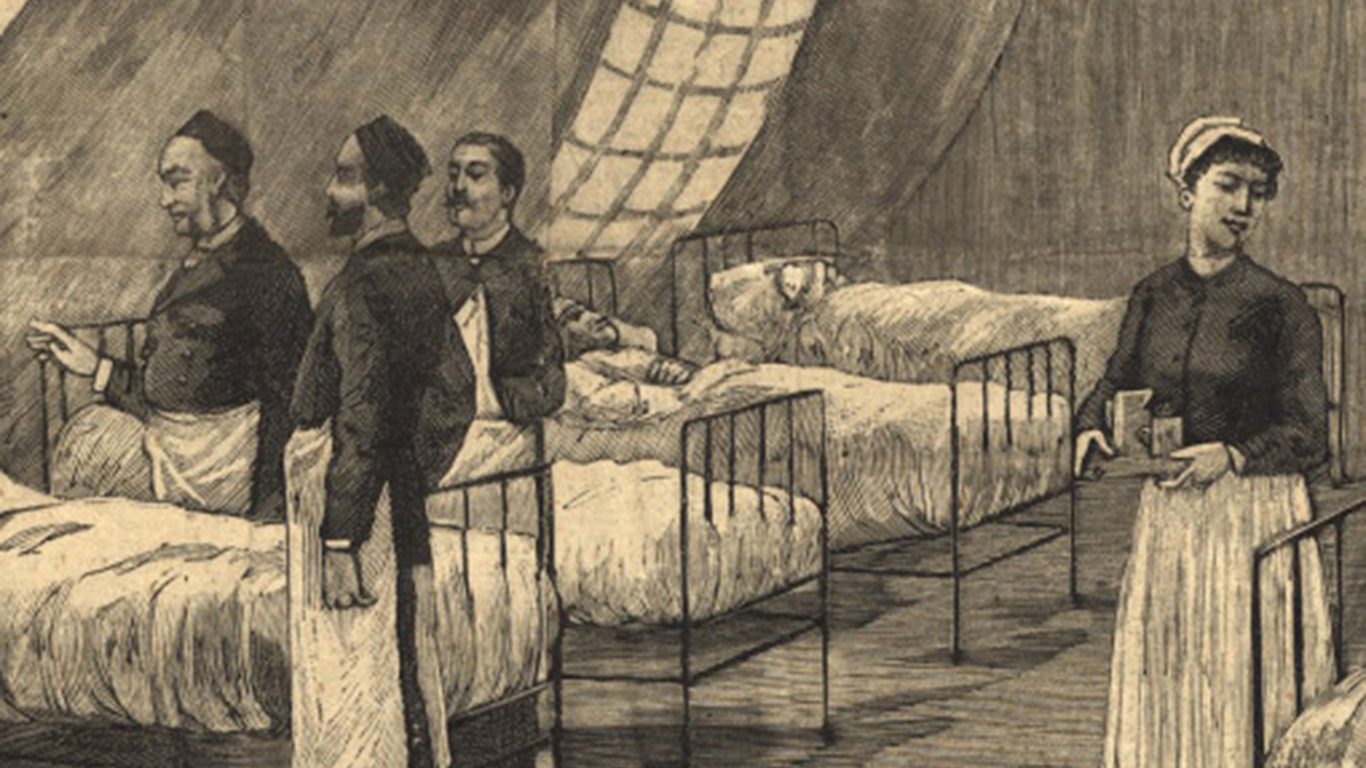
19. Russian Flu
> Death toll: 1 million
> Disease/Cause: Influenza A virus subtype H2N2
> Affected area: Turkestan, Canada, Greenland
> Duration: 1889-1890
The Russian flu outbreak in the 19th century is noteworthy because it was the first major epidemic to strike Europe after railroads were laid down. In 1889, there were already more than 125,000 miles of rail lines connecting European cities, allowing for easier spread of disease.

18. COVID-19
> Death toll: 1.1 million
> Disease/Cause: SARS-CoV-2
> Affected area: Worldwide
> Duration: 2019-
The severe acute respiratory syndrome coronavirus 2 (SARS-CoV-2), has infected more than 40.1 million people worldwide. In the almost 11 months since it was first detected in early December 2019 in Wuhan, China, COVID-19, the disease the novel coronavirus causes, has killed over 1.1 million people worldwide. According to some estimates, by June 2021, about 250 million people may be infected and over 1.7 million may die. Several pharmaceutical companies have been working on a vaccine, but according to experts, though a vaccine may be approved sooner, it will likely not be available to the general public before next summer. A vaccine must reduce the risk of infection by at least 50% to be considered for Food and Drug Administration emergency authorization.

17. Tuberculosis Outbreak
> Death toll: 1.3 million
> Disease/Cause: Tuberculosis
> Affected area: Worldwide
> Duration: 2012
Tuberculosis, an infectious bacterial disease, killed 1.3 million people worldwide in 2012. The disease infects one-third of the world’s population. In the United States, there has been greater success in controlling the disease. Only 3.2% of the American population is estimated to have tuberculosis. According to the National Institutes of Health, there are only 11,000 cases per year of tuberculosis in the United States.
[in-text-ad-2]
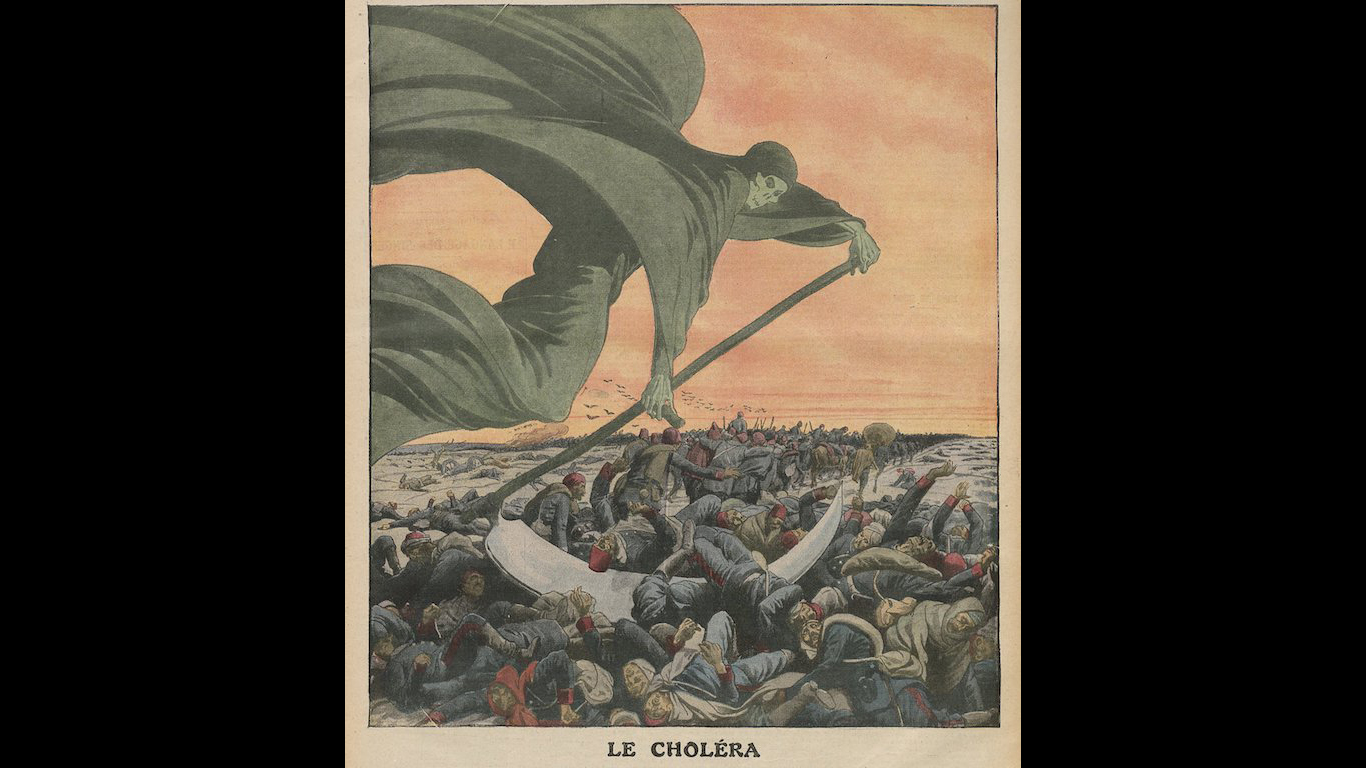
16. Sixth Cholera Pandemic
> Death toll: 1.5 million
> Disease/Cause: Cholera
> Affected area: Middle East, North Africa, Eastern Europe and Russia
> Duration: 1899-1923
The sixth cholera pandemic began at the end of the 19th century in the Indian province of Bengal and killed more than 800,000 in India before moving to the Middle East, northern Africa, Russia, and parts of Europe.

15. Asian Flu
> Death toll: 2 million
> Disease/Cause: Influenza A virus subtype H2N2
> Affected area: China, Singapore, Hong Kong, United States
> Duration: 1957-1958
The H2N2 Asian flu virus was a mixed species strain, originating from strains of avian influenza and human influenza. The pandemic came in two waves, with the second one striking hardest in the U.K. and United States. Thanks to the rapid development of a vaccine as well as the availability of antibiotics to treat secondary infections, the spread of the virus was limited.
[in-text-ad]

14. Smallpox Epidemic
> Death toll: 2-3.5 million (33% to 60% of Japan population)
> Disease/Cause: Smallpox
> Affected area: Japan
> Duration: 735-737
The smallpox epidemic in Japan in the eighth century was the first one ever recorded there and it was the most severe. Because most of the victims were children, Japanese medical advice books included instructions for lay people on how to protect their children from smallpox. Recovering from smallpox was ingrained into rituals that celebrated the growth of children. Smallpox is a contagious disease caused by the variola virus. People with smallpox have a fever and a skin rash.
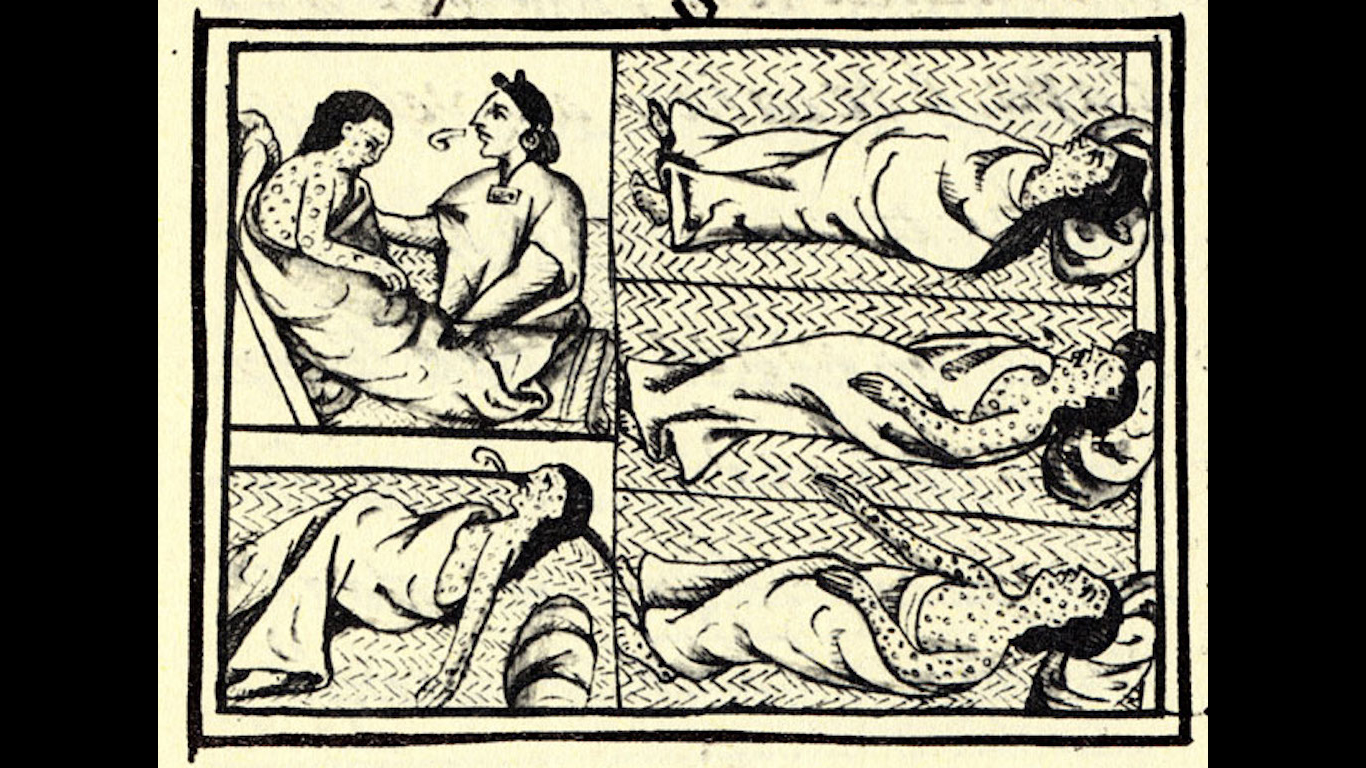
13. Cocoliztli
> Death toll: 2 million-2.5 million
> Disease/Cause: Hemorrhagic fevers/smallpox
> Affected area: Mexico
> Duration: 1576
Cocoliztli — the indigenous people’s name for “pest” — was one of the cataclysmic events to befall the native people in what is today Mexico. Epidemics of cocoliztli — indigenous hemorrhagic fevers transmitted by rats — were aggravated by extreme drought and the harsh working conditions imposed by the recently arrived Spanish.

12. Plague in Persia
> Death toll: 2 million
> Disease/Cause: Plague
> Affected area: Persia, India, Bahrain
> Duration: 1772-1773
For the first time in the Persian Gulf region, quarantine practices were introduced to contain plague. The implementation of quarantine was too late for the city of Basra, where the plague claimed the lives of 250,000 people in 1773. The plague also spread to India and Bahrain. Plague is a life-threatening infectious disease spread by different animals to human by fleas. There are three forms of plague: bubonic, pneumonic, and septicemic.
[in-text-ad-2]

11. Typhus Outbreak
> Death toll: 3 million
> Disease/Cause: Typhus
> Affected area: Russia, Eastern Europe
> Duration: 1918-1922
Typhus — a disease caused by bacteria spread by fleas and lice — changed the course of World War I. The disease was so widespread on the Eastern Front that it, along with a series of military disasters, dissolved the Russian Army. After the Bolsheviks took power and signed a peace treaty with Germany, the German Empire shifted the troops to the West from the East, extending the war on the Western Front.
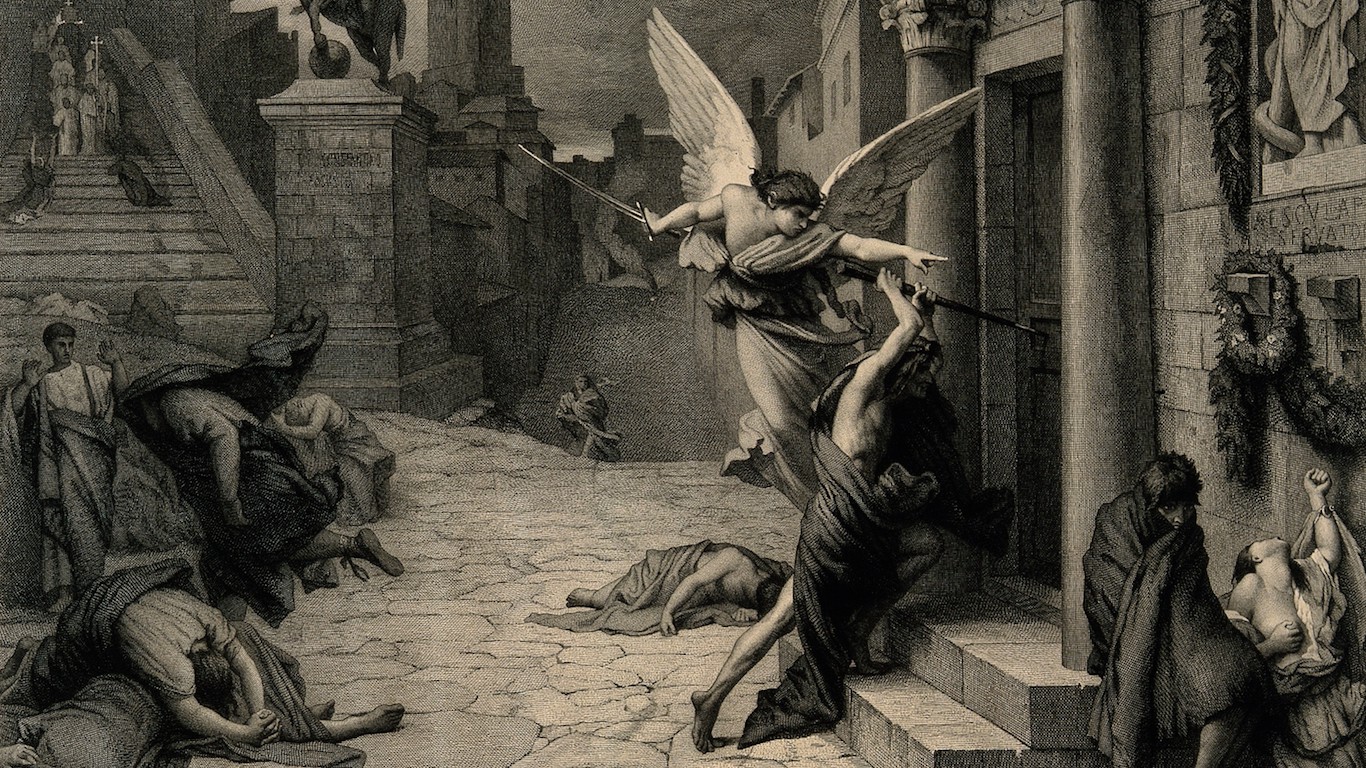
10. Antonine Plague
> Death toll: 5 million
> Disease/Cause: Unknown-Smallpox or measles
> Affected area: Asia Minor, Egypt, Greece, and Italy
> Duration: A.D. 165
The disease decimated the Roman army, forcing Emperor Marcus Aurelius to use Germanic troops under Germanic commanders to maintain the empire. This was the first step in de-Romanizing the empire’s legions
[in-text-ad]
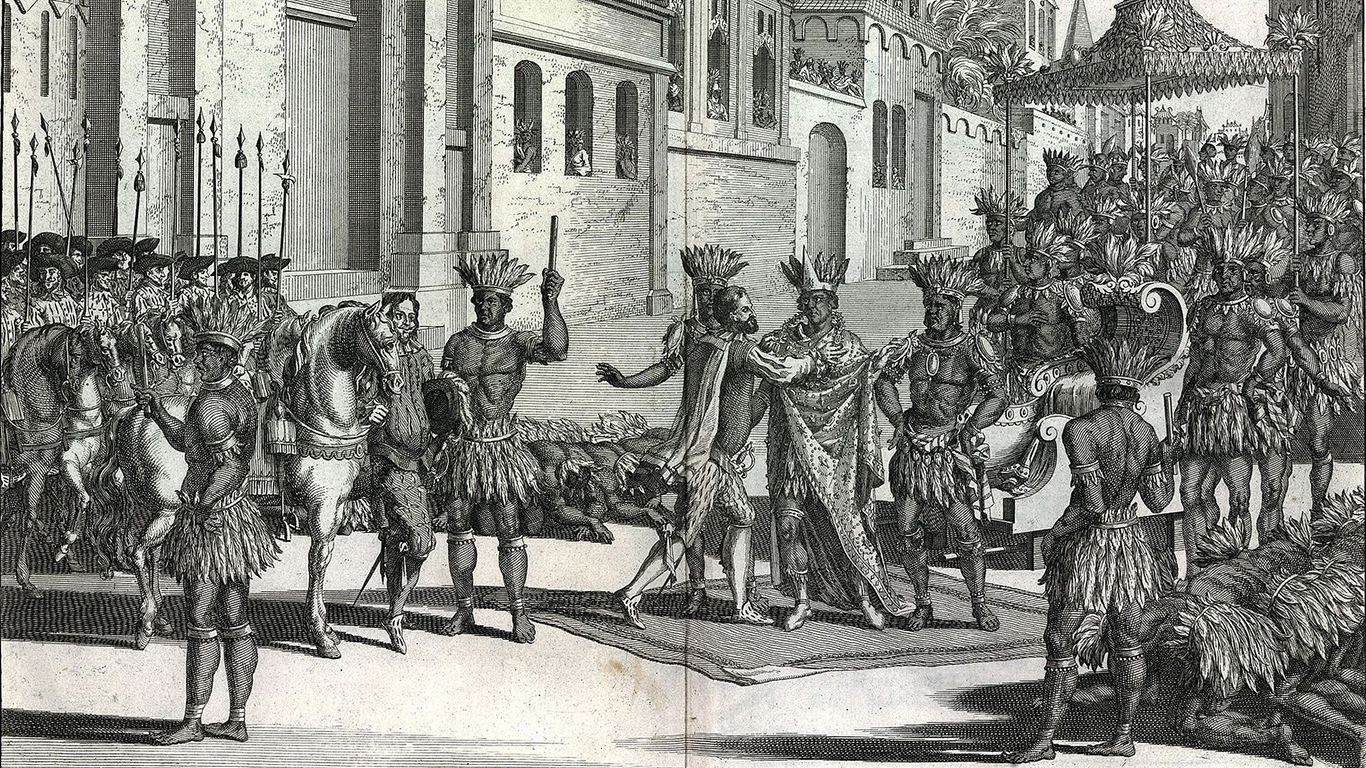
9. Smallpox in Mexico
> Death toll: 5-8 million
> Disease/Cause: Smallpox
> Affected area: Mexico
> Duration: 1519-1520
The Spanish conquest of what is now Mexico was accelerated by the introduction of smallpox to the indigenous population. It was the start of one of the greatest depopulation events in the history of humankind.
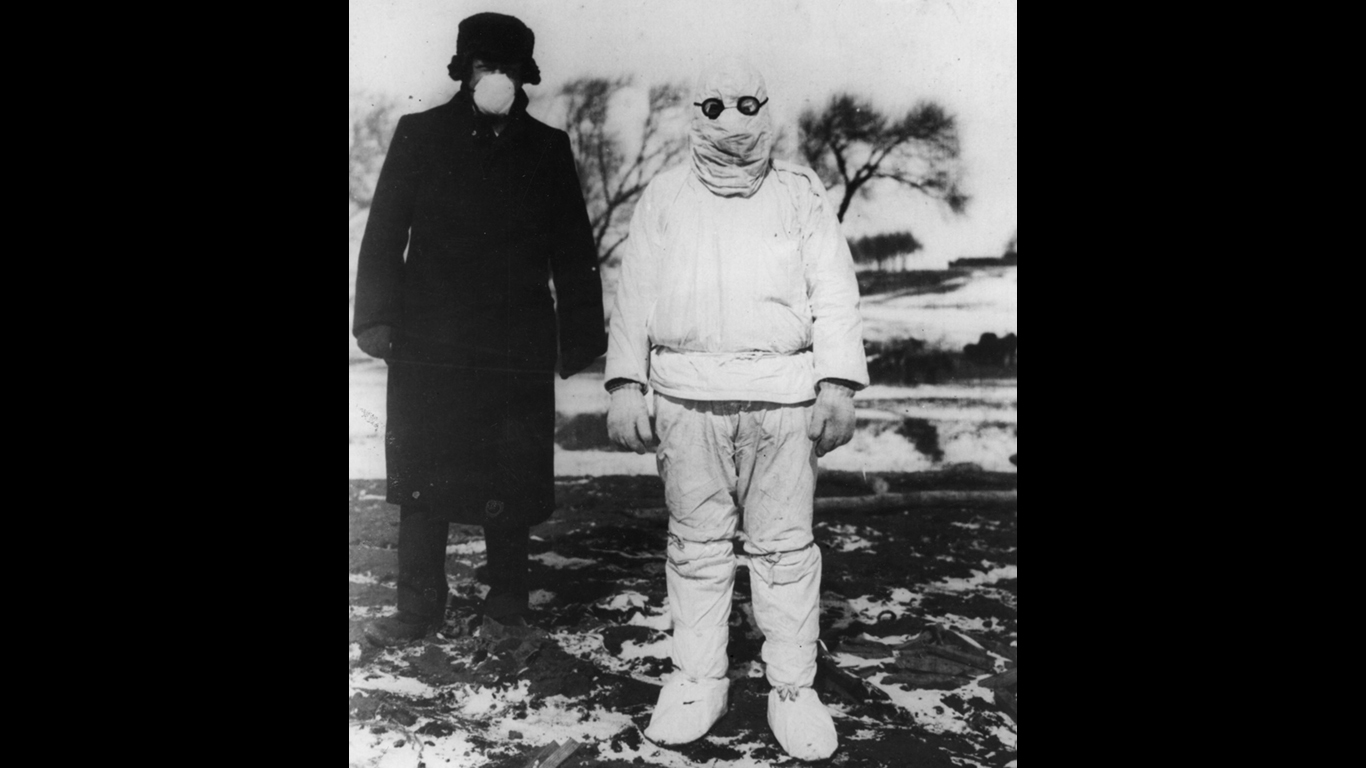
8. Modern Plague
> Death toll: 10 million
> Disease/Cause: Bubonic plague
> Affected area: India, China, parts of other areas around world
> Duration: 1894-1903
In 1897, during the epidemic in India, Paul-Louis Simond and Masanori Ogata separately discovered the role of fleas in the transmission of plague. Two years earlier, Alexandre Yersin, Albert Calmette, and Améndée Borrel developed the first form of immunization against plague.

7. Cocoliztli
> Death toll: 12-15 million
> Disease/Cause: Hemorrhagic fevers/smallpox
> Affected area: Mexico
> Duration: 1545-1548
The epidemic of cocoliztli from 1545 to 1548 killed as many as 15 million people, or up to 80% of the native population of Mexico. In characterizing this calamity, Rodolfo Acuna-Soto, a professor of epidemiology at Universidad Nacional Autonoma de Mexico said, “In absolute and relative terms the 1545 epidemic was one of the worst demographic catastrophes in human history, approaching even the Black Death.”
[in-text-ad-2]

6. The Third Plague Pandemic
> Death toll: 12-15 million
> Disease/Cause: Bubonic plague
> Affected area: Worldwide
> Duration: 1855-1950s
The pandemic originated in China’s Yunnan province. It eventually moved to Hong Kong and Guangzhou, both major shipping hubs, and the disease was transported all over the world by the end of the 19th century. It was at this time that science was making significant progress in identifying how fleas were the cause of the outbreak.

5. Smallpox Outbreak Among Native Americans
> Death toll: 20 million (estimated)
> Disease/Cause: Smallpox
> Affected area: North America
> Duration: Early 17th century
The start of the reduction in the native population in North America began with the arrival of European settlers in early 17th century. It is not known how many indigenous people were in the Americas at the time Europeans arrived in the Western Hemisphere, but there is no doubt that the diseases they brought with them led to a historic depopulation of the Native people.
[in-text-ad]
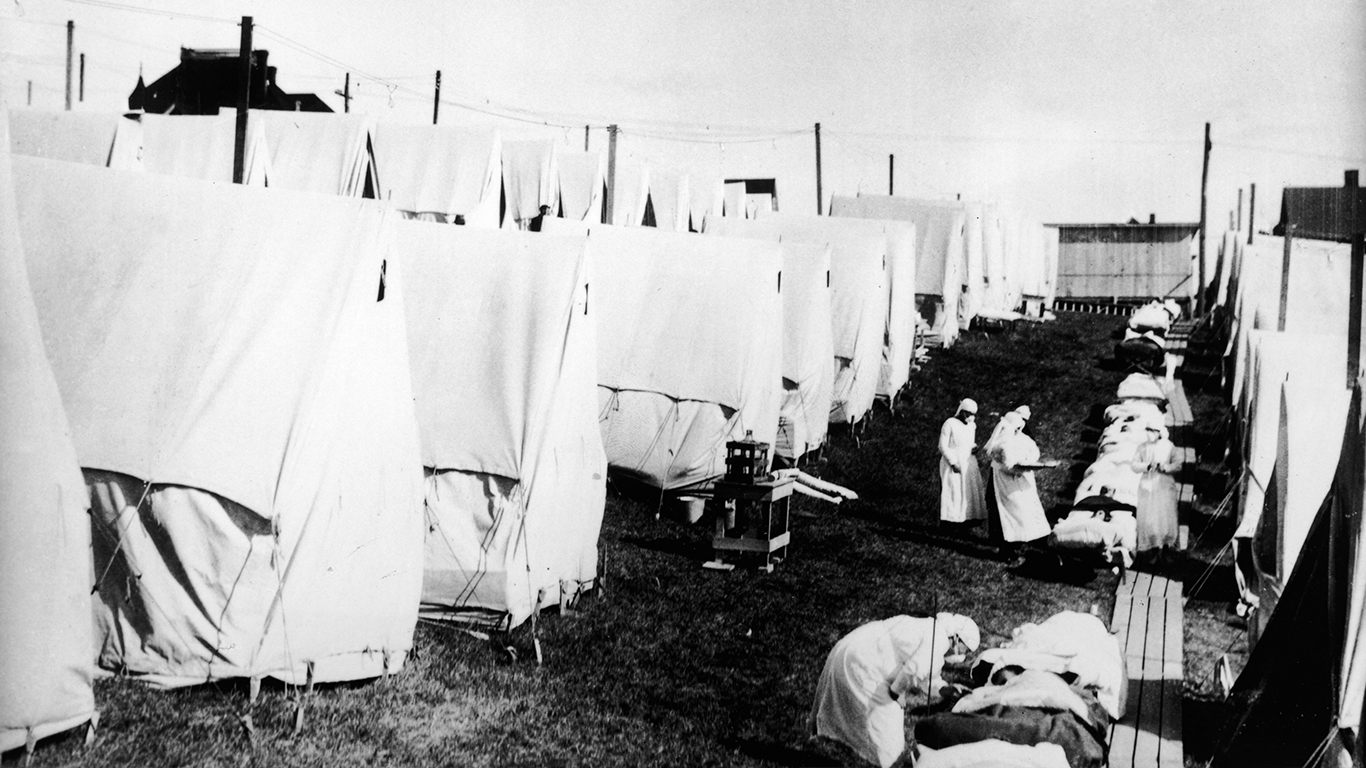
4. 1918 Spanish Flu
> Death toll: 20 million
> Disease/Cause: Influenza (H1N1)
> Affected area: Europe, United States
> Duration: 1918-1919
The Spanish flu was one of the most calamitous events in human history. It shaped public policy in stressing annual vaccination initiatives and associated measures to fight the spread of the disease. The result of the death of so many males from the flu and World War I provided an opportunity for women to take on leadership roles and eventually led to the passage of the 19th Amendment in the United States that gave women the right to vote.

3. The HIV/AIDS epidemic
> Death toll: 39 million
> Disease/Cause: HIV/AIDS
> Affected area: Worldwide
> Duration: 1960-
Because the HIV/AIDS epidemic in the West first affected the gay community, stigma and discrimination was attached to it. The virus attacks the immune system and weakens it so the body can no longer fight infections and diseases. After years of demanding better health care and research, scientific advances like the development of antiretroviral drugs allow those afflicted with the disease to live longer lives with HIV. HIV annual infections declined by 8% in the United States and by 18% globally from 2010 to 2015, however, the disease is still highly prevalent in Africa, with 70% of global HIV cases.

2. The Black Death
> Death toll: 50 million-200 million
> Disease/Cause: Bubonic plague
> Affected area: Europe
> Duration: 1346-1350
The Black Death was one of the most convulsive events in European history. It depleted the labor force and reduced the amount of land that could be cultivated. The few workers who survived saw a drastic increase in their wages. This also caused a greater fluidity in the economy and some historians believe it hastened the end of the feudal system. Another unfortunate consequence of the Black Plague was the surge in anti-Semitism, which intensified after the Black Plague as Jews were blamed for the pandemic.
[in-text-ad-2]
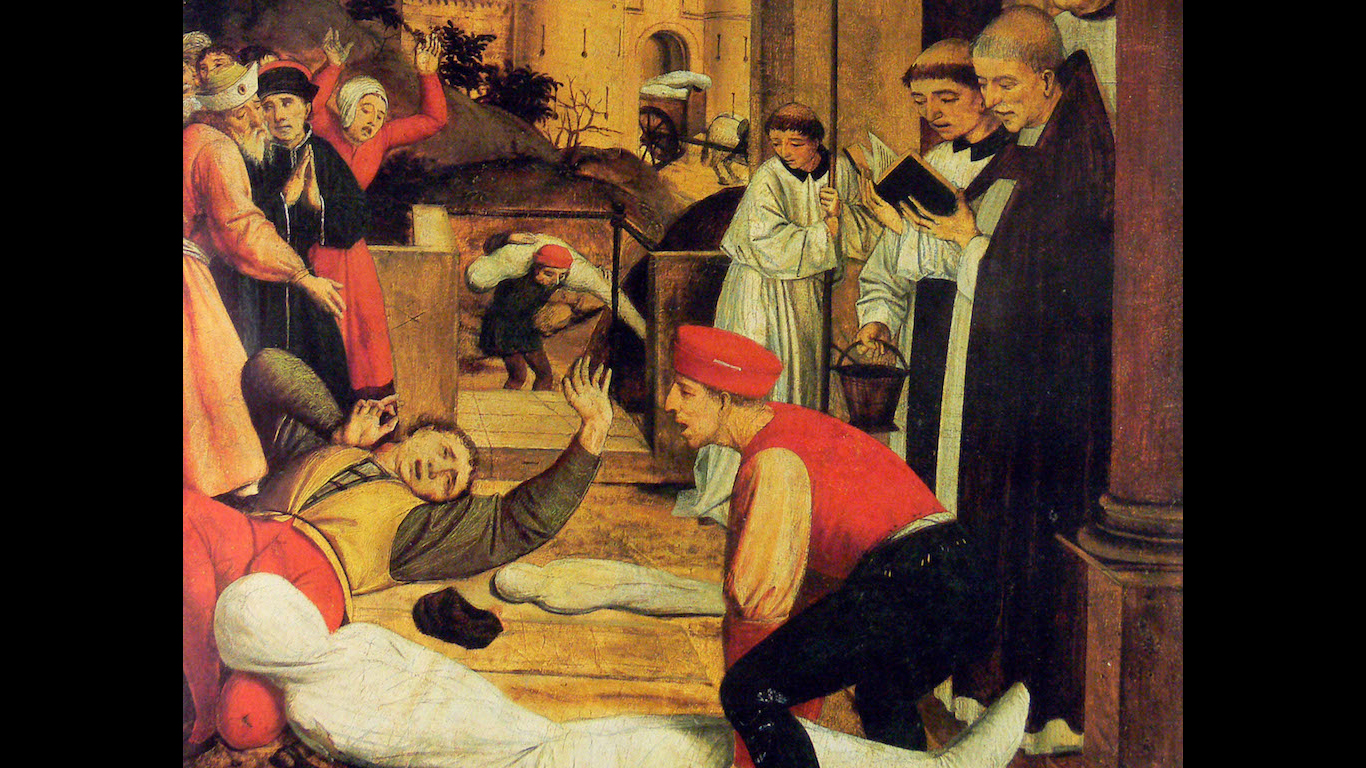
1. The Plague of Justinian
> Death toll: 100 million
> Disease/Cause: Bubonic plague
> Affected area: China, northern Africa, Mediterranean countries
> Duration: A.D. 541-542
The Plague of Justinian practically destroyed the Byzantine Empire in the sixth century. The pandemic reduced the size of the Byzantine army and its capacity to oppose enemies. The decrease in the population not only hurt the military, but also the economic and administrative structures of the empire, which began to collapse.
Are you ahead, or behind on retirement? For families with more than $500,000 saved for retirement, finding a financial advisor who puts your interest first can be the difference, and today it’s easier than ever. SmartAsset’s free tool matches you with up to three fiduciary financial advisors who serve your area in minutes. Each advisor has been carefully vetted and must act in your best interests. Start your search now.
If you’ve saved and built a substantial nest egg for you and your family, don’t delay; get started right here and help your retirement dreams become a retirement reality.
Thank you for reading! Have some feedback for us?
Contact the 24/7 Wall St. editorial team.